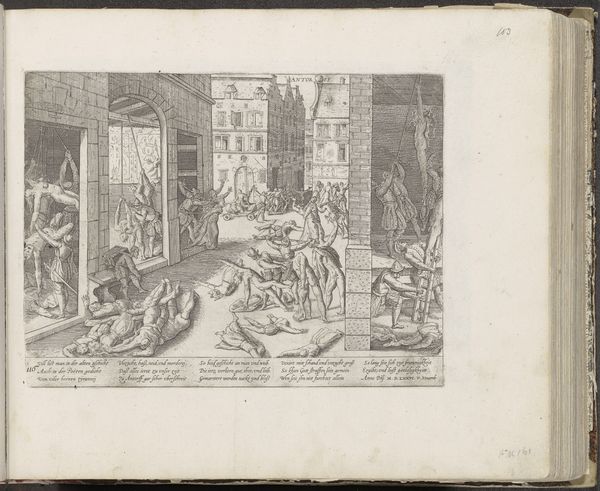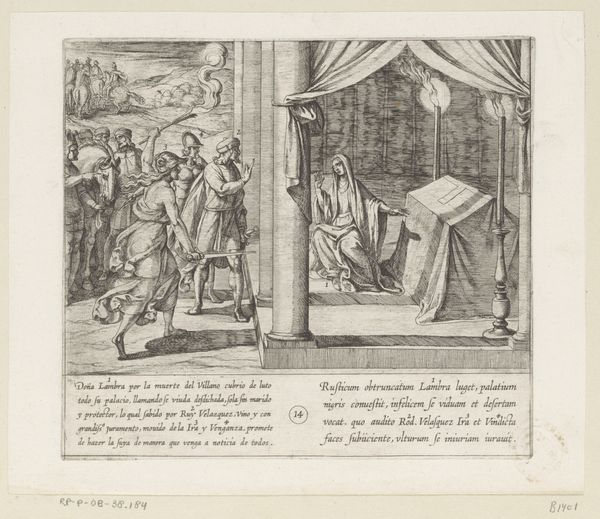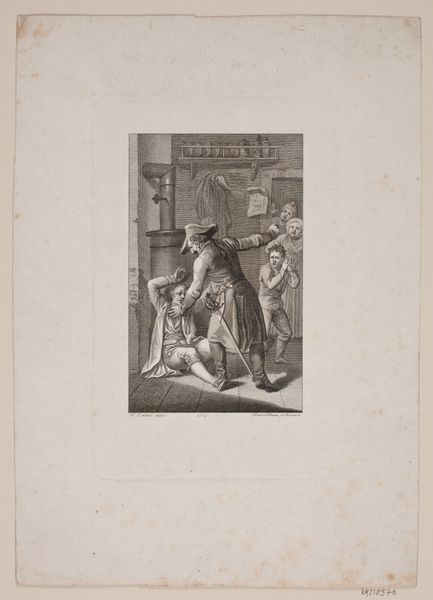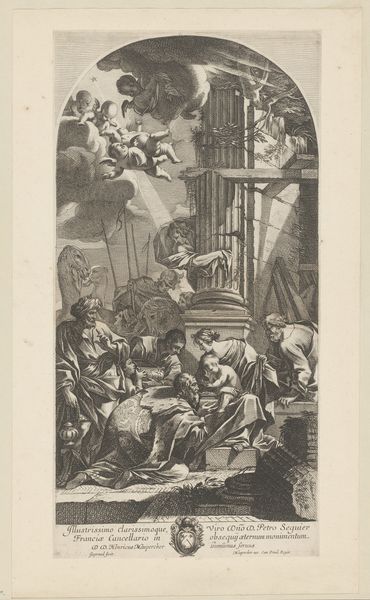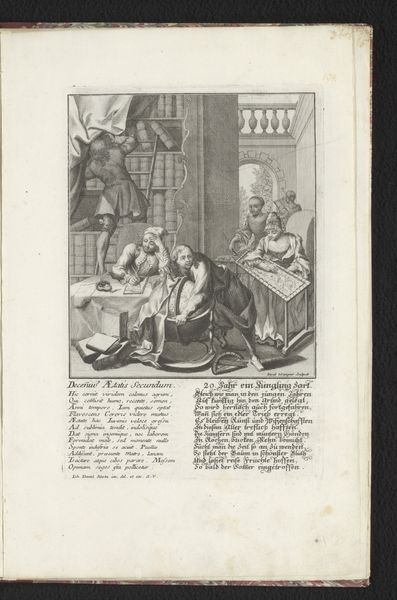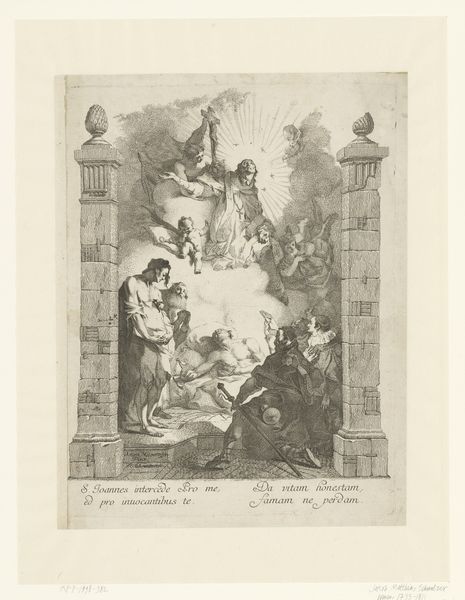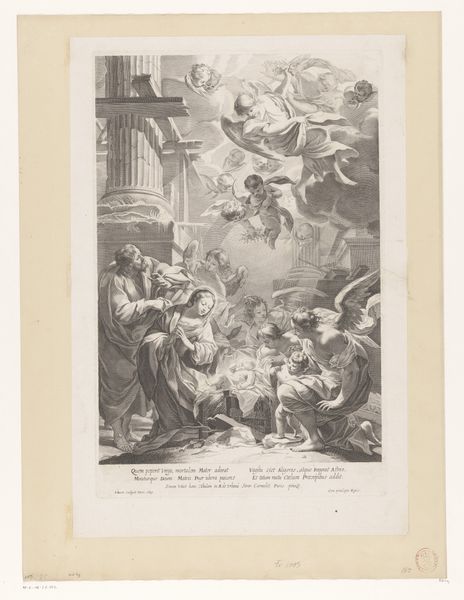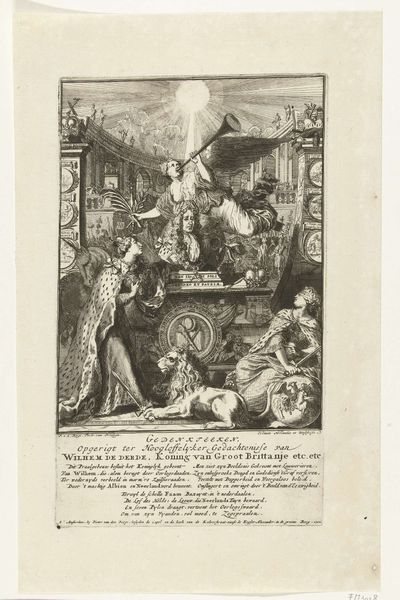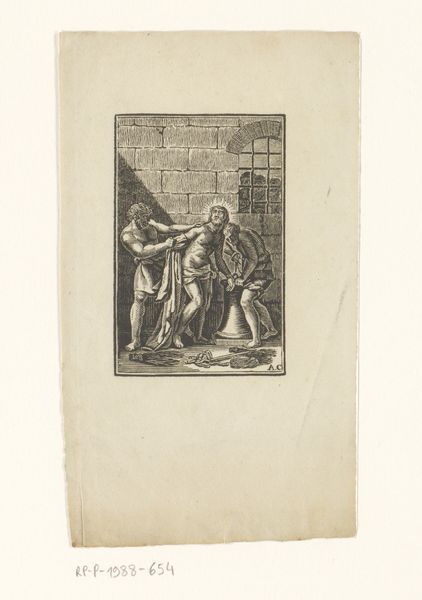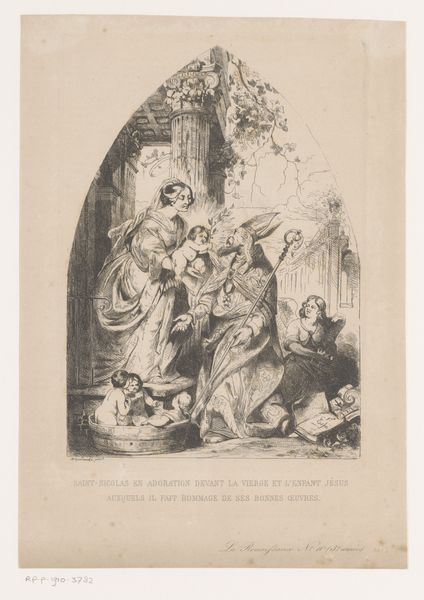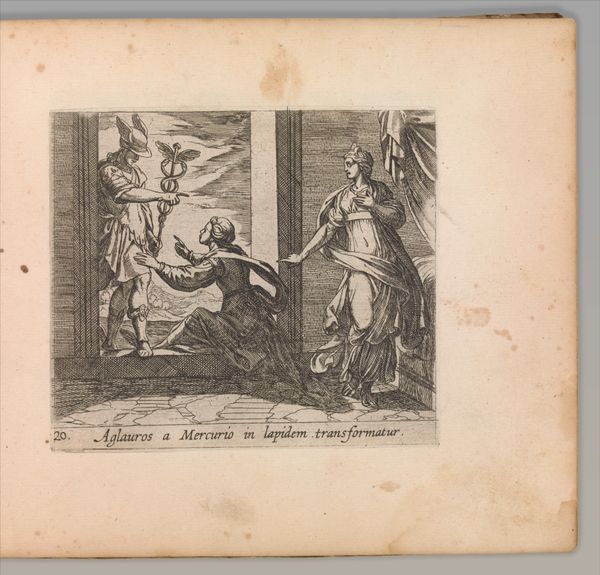
Dimensions: Image: 5 3/8 × 3 9/16 in. (13.6 × 9.1 cm) Sheet: 9 3/16 × 5 13/16 in. (23.4 × 14.7 cm)
Copyright: Public Domain
Nicolas de Launay created this engraving, "Canto 31, Stanza 70, from 'Orlando Furioso'," sometime before 1792. Its lines were incised into a metal plate, likely copper. The engraver would have used a tool called a burin to cut the lines, creating a network of grooves to hold ink, which was then transferred to paper under pressure. Consider the labor involved in this meticulous process. Each line is a testament to the engraver's skill and patience. The sharp lines, cross-hatching, and stippling create a range of tones and textures, from the churning water to the figures' expressions. Engraving was a key method for reproducing images at this time, crucial for disseminating visual information and driving consumption. The social and cultural significance of this print lies not only in its depiction of a scene from "Orlando Furioso," but also in its role as a commodity, a product of skilled labor within a growing market for printed images. By understanding the material and process behind its creation, we recognize the true complexity of this work.
Comments
No comments
Be the first to comment and join the conversation on the ultimate creative platform.

